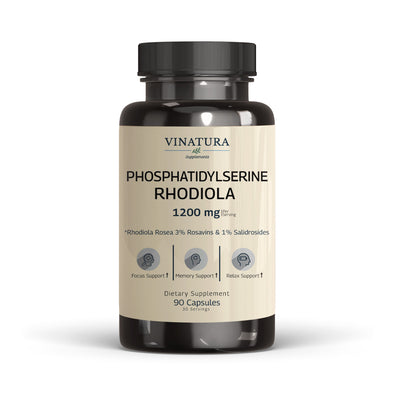
How to Use Shilajit for Knee Pain and Joint Pain?
Knee pain and joint pain are common conditions that can affect people of all ages, often stemming from improper daily habits. These conditions can hinder one's mobility and movement, significantly impacting our quality of life.
There are various methods to treat these ailments. This article will explore a herbal remedy originating from the Himalayas called Shilajit.
Traditionally, Shilajit has been used as a versatile medicine to treat various ailments and as a remedy to rejuvenate muscles, nerves, and bones.
Now, let's delve into how to use Shilajit to treat knee pain and joint pain effectively.
Before exploring further, please read the disclaimer located at the end of this webpage.
How Does Shilajit Benefit for Knee Pain and Joint Pain?
Inflammation Properties

Shilajit contains compounds known for their anti-inflammatory properties. [1]
This ability of Shilajit primarily comes from its active component called fulvic acid. Fulvic acid possesses antioxidant and anti-inflammatory properties.
Additionally, Shilajit contains various other compounds such as humic acid, fatty acids, resins, rubber, phenolic compounds, and many other components that may also play a role in its anti-inflammatory capabilities.
These compounds may help reduce joint inflammation, a common cause of knee and joint pain.
A study involving 63 men aimed to investigate the impact of Shilajit supplementation on muscle strength and fatigue resistance.
The results showed that using Shilajit at a high dosage (500 mg/day) for 8 weeks helped enhance muscle strength and fatigue resistance, as well as reduce connective tissue damage, facilitating muscle adaptation and development. [2]
Learn more: Is Shilajit Good For Muscle Building? A Scientific Perspective
Support Joint Health
Shilajit contains several substances that may support joint health: [2]
- Fulvic acid: It has the ability to reduce inflammation and pain in the joints.
- Dibenzo-alpha-pyrones: This substance found in Shilajit has been studied for its anti-inflammatory and pain-relieving properties in joints.
- Minerals: Shilajit contains a variety of minerals like calcium, magnesium, and p otassium that support overall joint health.
- Amino acids and proteins: Shilajit also contains amino acids and proteins, which can provide energy and support tissue regeneration in the joints.
- Antioxidants: Shilajit exhibits antioxidant activity, which may help protect cells from damage and reduce inflammation in the joints.
These minerals and nutrients help strengthen bones and cartilage, thereby reducing the risk of pain and discomfort and aiding in the treatment of knee pain and joint pain.
Mitigating Swelling
Swelling around the knee joint can exacerbate pain and discomfort.
The anti-inflammatory properties of Shilajit may help reduce swelling, alleviating associated symptoms, including inhibiting signs of inflammation, such as the production of inflammatory compounds, and protecting cells from oxidative damage.
Moreover, due to its high fulvic acid content, Shilajit may also protect against free radicals and cell damage. [3]
How to Use Shilajit for Knee Pain and Joint Pain?
Currently, you can use Shilajit to treat knee and joint pain in three main ways.
First, use Shilajit powder or resin mixed with water to create Shilajit water for consumption.
Second, use Shilajit topically. Create a mixture by blending Shilajit powder with coconut oil and apply directly to the affected area. Then massage gently for better absorption.
And a simpler method, which is the most commonly used, is to use Shilajit supplements. Shilajit supplements are available in capsule or tablet form. You can carry Shilajit everywhere for easy consumption.
Read more: 7 Best Shilajit Supplements to Improve Immune System
What to Look for When Using Shilajit for Knee Pain?

To effectively use Shilajit to treat knee pain and joint pain, you need to use it regularly and at the correct dosage. However, since the FDA does not recognize Shilajit, you need to find a reputable and quality supplier to ensure getting a pure and authentic Shilajit product, not a fake one.
Here are some factors you may consider when using Shilajit:
- Credibility: Seek reputable suppliers and products that have undergone appropriate refining processes to eliminate impurities. You may consider certifications, peer reviews, and online reviews to find reputable suppliers.
- Search for third-party certifications or testing to ensure you find a safe and quality Shilajit product.
- Dosage: Use the recommended dosage from the manufacturer or healthcare professional to achieve the best results.
Other Ways to Reduce Knee Pain and Joint Pain

An important step in ending knee joint pain is to identify the underlying cause of this condition. In addition to using Shilajit, you can effectively manage knee pain and joint pain through the following methods:
Regular exercise: Regular exercise will enhance your body's flexibility. Exercises you can consider include swimming, cycling, yoga, and running.
Maintain a healthy weight: Excessive body weight can stress the joints, exacerbating pain. You can build a balanced diet and exercise regularly to manage your body weight.
Use joint-supporting supplements: Apply cold or hot compresses to reduce pain and inflammation. For cold compresses, do not apply directly to the skin; each application should not exceed 10 minutes to avoid cold burns.
Read more:
- Does Shilajit Affect the Liver? Helpful Or Harmful?
- Is Shilajit Bad for Kidneys? How to Kidney Patients Take Shilajit
- 15 Shilajit Benefits, Usage, Dosage And Everything
Conclusion
Shilajit has the potential to help control knee pain and joint pain due to its anti-inflammatory properties and joint health support. You can effectively improve joint health by incorporating Shilajit into your lifestyle and diligently exercising.
However, choosing a high-quality Shilajit product and adhering to the recommended dosage for optimal results is essential.
References
- [1] Victoria, S., Rajkumar Kothandaraman, Ravikumar Nesamani, Balasubramanian, S., & Sekar Mahalaxmi. (2020). In vitro assessment of cytotoxicity and anti-inflammatory properties of shilajit nutraceutical: A preliminary study. Journal of Interdisciplinary Dentistry, 10(1), 24–24. https://doi.org/10.4103/jid.jid_2_20
- [2] Parisa Kangari, Roshangar, L., Iraji, A., Tahereh Talaei-Khozani, & Mahboobeh Razmkhah. (2022). Accelerating effect of Shilajit on osteogenic property of adipose-derived mesenchymal stem cells (ASCs). Journal of Orthopaedic Surgery and Research, 17(1). https://doi.org/10.1186/s13018-022-03305-z
- [3] Inostroza, J., Ana Maria Vinet, Retamal, G., Lorca, P., Ossa, G., Facklam, R. R., & Sorensen, R. U. (2001). Influence of Patient Age on Streptococcus pneumoniae Serotypes Causing Invasive Disease. Clinical and Diagnostic Laboratory Immunology, 8(3), 556–559. https://doi.org/10.1128/cdli.8.3.556-559.2001
Author

Product Disclaimer
The dietary supplement products mentioned on this website are formulated based on scientific research and adhere to FDA guidelines for dietary supplements. However, the content of the articles has not been evaluated by the Food and Drug Administration (FDA) and is not intended to promote or endorse any specific product. Any products sold on this website are not intended to diagnose, treat, cure, or prevent any disease.
Opinions and Endorsements
Any claims, statements, or opinions expressed in the articles are those of the author(s) and do not necessarily reflect the views or opinions of the manufacturers of the dietary supplement products. The products sold on this website are separate from the content of the articles and are not directly endorsed or associated with the information presented here.
Liability Disclaimer
The author(s) of the articles, website, and manufacturers of the dietary supplement products do not assume any liability for any potential consequences arising from the use of the information provided in the articles. It is recommended that individuals consult with a qualified healthcare professional before making any dietary or lifestyle changes, including the use of dietary supplements.
Product Usage
Please refer to the product labels and packaging for specific usage instructions and guidelines for the dietary supplement products sold on this website.
Customer Support
For any concerns or questions regarding the dietary supplement products, please contact our customer support team, who will be more than happy to assist you.





Leave a Comment
Be the first to comment.
What do you think?